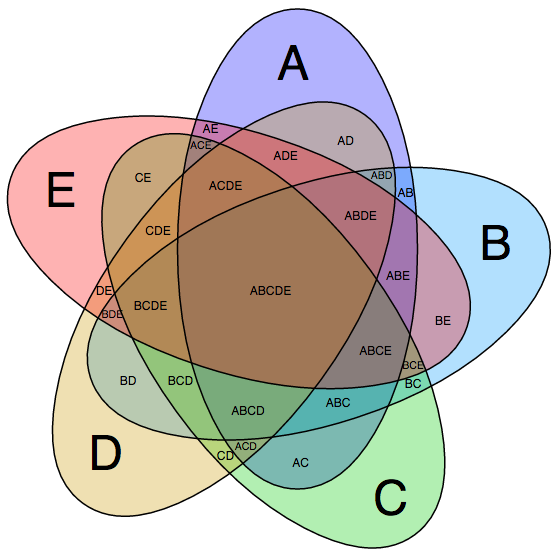Introduction to Programming using Python
Guided self-study course, Session 1
Fall 2014
Welcome!
You're our first cohort for this method. So expect some hiccups, and please provide feedback.
Instruction time is focused on what the students need that week: lecture, demos, discussion, etc.
Expectations
Students should:
- at a minimum, skim through the assigned readings
- perhaps watch the relevant videos
- hopefully attempt some of the practice problems.
Try to have at least one or two questions for class.
My instruction style
- Informal
- There will be memes
- Interactive
- I will make you talk, but usually as a group.
- Focus on practicing vocabulary in class
- There are no stupid questions
- Only things I haven't explained yet, or explained poorly. Call me out!
- We're all students and peers in this room.
- Let me know if you have learning needs I can accommodate.
"Priming" information
- Some of what I'm going to show you will be to "prime" you for later material.
- Don't expect to understand everything perfectly
- Aim for "optimistically hazy"
- I'll try to note when I'm going for priming
Py-CU
Champaign Urbana's Python User Group
http://www.py-cu.org
- Weekly hack/project nights on Tuesdays, from 7-9
- Located in Makerspace Urbana
ASIS&T
Student chapter of ASIS&T at GSLIS.
Association for Information Science and Technology
Just starting up!
Who is doing this?
Instructor
Elizabeth Wickes
@elliewix
wickes1@illinois.edu
www.elizabethwickes.com
Co-organizer of Py-CU
From sociology/psychology
{quant,qual}//<3
Current GSLIS student in
curation and SODA
How far will we get?
- Through the foundational material, hopefully.
- What does that include?
- Syntax
- Logic and control
- Functions
- Loops
- Lists, strings, dictionaries, and tuples
- File processing
But you won't be done
- Prep to move on with existing or more advanced materials
- Not teaching you deep Python stuff
- You can stay with Python, or move to another language
- What you get here is reasonably universal
Unless you want to be

Programming languages

Purpose
Web languages
HTML, JavaScript, PHP..
Software languages
Java, C++, Visual Basic...
Content
Language style
Abstraction level
Methodological approach
and so many more...

Classification systems
That's neat, but what is Python?

Title Text
- Bullet One
- Bullet Two
- Bullet Three
>>> import this
The Zen of Python, by Tim Peters
Beautiful is better than ugly.
Explicit is better than implicit.
Simple is better than complex.
Complex is better than complicated.
Flat is better than nested.
Sparse is better than dense.
Readability counts.
Special cases aren't special enough to break the rules.
Although practicality beats purity.
Errors should never pass silently.
Unless explicitly silenced.
In the face of ambiguity, refuse the temptation to guess.
There should be one-- and preferably only one --obvious way to do it.
Although that way may not be obvious at first unless you're Dutch.
Now is better than never.
Although never is often better than *right* now.
If the implementation is hard to explain, it's a bad idea.
If the implementation is easy to explain, it may be a good idea.
Namespaces are one honking great idea -- let's do more of those!For what?
- General purpose
- web, software, utility...
- Platform independent
- An industry standard
- readas: in job titles
- Currently the most popular language for intro classes [1]
How so?
- Interpreted
- Strong
- Dynamic
...
[1] http://cacm.acm.org/blogs/blog-cacm/176450-python-is-now-the-most-popular-introductory-teaching-language-at-top-us-universities/fulltext
Let's just get out a chart...
Strongly
typed
Weakly
typed
Dynamic
Static/
Declared



>>> import this
The Zen of Python, by Tim Peters
Beautiful is better than ugly.
Explicit is better than implicit.
Simple is better than complex.
Complex is better than complicated.
Flat is better than nested.
Sparse is better than dense.
Readability counts.
Special cases aren't special enough to break the rules.
Although practicality beats purity.
Errors should never pass silently.
Unless explicitly silenced.
In the face of ambiguity, refuse the temptation to guess.
There should be one-- and preferably only one --obvious way to do it.
Although that way may not be obvious at first unless you're Dutch.
Now is better than never.
Although never is often better than *right* now.
If the implementation is hard to explain, it's a bad idea.
If the implementation is easy to explain, it may be a good idea.
Namespaces are one honking great idea -- let's do more of those!

How do you write things in Python?
Lesson 1: Punctuation

White space
Warning! Incoming cliche!
A classic:
Python vs. Java
>>> if 5 == 5:
... print "new hotness"
... print "because math"
if (5 == 5) {
System.out.println("old and busted");
System.out.println("because math");
}Python
Java
(I kid, I kid...)
␠␠␠␠
␠␠␠␠
>>> import this
The Zen of Python, by Tim Peters
Beautiful is better than ugly.
Explicit is better than implicit.
Simple is better than complex.
Complex is better than complicated.
Flat is better than nested.
Sparse is better than dense.
Readability counts.
Special cases aren't special enough to break the rules.
Although practicality beats purity.
Errors should never pass silently.
Unless explicitly silenced.
In the face of ambiguity, refuse the temptation to guess.
There should be one-- and preferably only one --obvious way to do it.
Although that way may not be obvious at first unless you're Dutch.
Now is better than never.
Although never is often better than *right* now.
If the implementation is hard to explain, it's a bad idea.
If the implementation is easy to explain, it may be a good idea.
Namespaces are one honking great idea -- let's do more of those!
This is just an example.
You aren't expected to know this syntax.
Yet.
>>> if 5 == 5:
... if 6 == 6:
... print "fhew"
... print "whoa nesting">>> if 5 == 5 and 6 == 6:
... print "math reality still works"
... print "with less nesting"Style choices
␠␠␠␠
␠␠␠␠
␠␠␠␠
␠␠␠␠
␠␠␠␠
␠␠␠␠
␠␠␠␠
Let's start typing things!
Go here: http://repl.it/
Choose Python.
Start Pythoning.
How do you write things in Python?
Lesson 2: Nouns
Objects!
Everything in Python is an object
We'll keep building up this concept.
Let it be hazy for now.
type() is your friend
- type() tells you what something is
Try some examples as we go.
These are your "things"
- Numbers
- Words
- Containers
- Boolean
-
int
- integers
- 1, 2, 3, ...
-
float
- floats
- 1.1, 2.1, 3.14159...
- there are more, but that's enough
These are your "things"
- Numbers
- Words
- Containers
- Boolean
-
str
- strings
-
""",",'
- "hello world", "1", 'one', 'foo'
- """This is a multiline string. You use three "s to indicate it."""
These are your "things"
- Numbers
- Words
- Containers
- Boolean
-
list
- Lists
- ['apple', 'banana']
- dict
- dictionaries
- {'apple': 1.25, 'banana': .75}
- tuple
- tuples
- (1, 2, 3)
We'll talk about these a lot more later on.
These are your "things"
- Numbers
- Words
- Containers
- Boolean
-
True
- Logical true
- False
- Logical false
- Note the caps!
We'll talk about these a lot more later on.
Variables!
We can name things now
Buckets and buckets of kittens
...err, values.

Names are handy
Let's say I want to give the int value of 1,203,109 a name. How about my_big_number?
This also works with text.
>>> my_big_number = 1203109
>>> my_big_number
1203109
>>> my_big_number * 2
2406218
>>> my_big_number /3
401036
>>> my_big_number % 3
1
>>> my_big_number / 3.0
401036.3333333333
>>> my_other_number = my_big_number * 4
>>> my_other_number
4812436
>>> first = "Elizabeth"
>>> family = "Wickes"
>>> full = first + " " + family
>>> full
'Elizabeth Wickes'Remember that dynamic thing?
>>> stuff = 1
>>> stuff
1
>>> type(stuff)
<type 'int'>
>>> stuff = "I'm now a string"
>>> type(stuff)
<type 'str'>Dynamic typing:
The bucket doesn't care, the bucket just contains.
Duck typing
- "walks like a duck and swims like a duck and quacks like a duck, I call that bird a duck"
- Python says: "If it walks like a string, talks like a string, and I can do string-like things to it, I call that object a string"

100% bunny-like object
How do you write things in Python?
Lesson 3: Verbs
Operators
Math trigger warning
Spoiler alert: you'll be fine


Basic operators
* Multiply: 2 * 3 = 6
+ Addition: 2 + 2 = 4
- Subtraction: 2 - 2 = 0
** Exponent: 4 ** 2 = 16
% Modulo (find remainder):
4 % 2 = 0
12 % 6 = 0
3 % 2 = 1
== Equality check (logical operator): 5 == 5 = True
Division gets weird
1 / 2 = 0 but 1.0 / 2.0 = 0.5
You get what you give.
Don't worry so much about this yet. You'll get it in practice.
Remember strong typing?
Some operators work with non-numbers.
Plus (+) will work between two strings.
Multiply (*) will work between a string and an integer.
>>> 2+2
4
>>> "two" + "two"
'twotwo'
>>> "two" * 2
'twotwo'But some don't work...
>>> "2" + 2
Traceback (most recent call last):
File "<stdin>", line 1, in <module>
TypeError: cannot concatenate 'str' and 'int' objects
>>> "two" * 2.3
Traceback (most recent call last):
File "<stdin>", line 1, in <module>
TypeError: can't multiply sequence by non-int of type 'float'How do you write things in Python?
Lesson 4: Sentences
Expressions
Gettin' things done!
Expressions are how you make things happen
- You've already seen some of these:
- print "hello world"
- 2 + 2
- "hello * 4
- 5 == 5
- Get a little fancy
- ("fifty" + "five") * 4
- You'll learn more as you expand your vocabulary
Class participation!
- Come to the front of the class, and introduce yourself as a variable with your name.
- Grab a paper with a noun.
- Introduce yourself with your variable name, your type, and your value.
- I'll bring up some verbs.
- Pair up as valid expressons and determine your output.
- Don't pair up if you'll produce an error!


Homework!
Read/watch
Python for Informatics
- Chapter 1
- Chapter 2
Attempt
- After 2.9: Python Syntax
- After 2.9: Tip Calculator
- Chapter 2 exercises
Session 1: Intro to Programming using Python
By Elizabeth W.
Session 1: Intro to Programming using Python
Lecture slides for Day 1 of http://elizabethwickes.com/classroom-lesson-plan/
- 1,128



